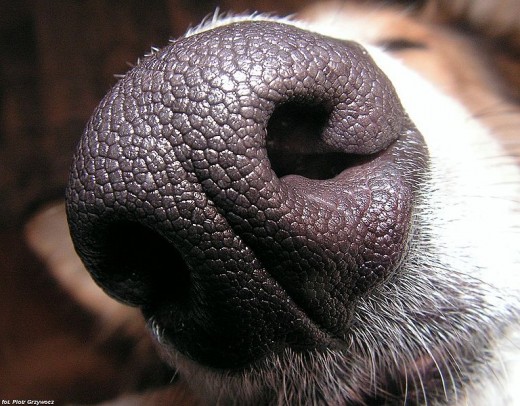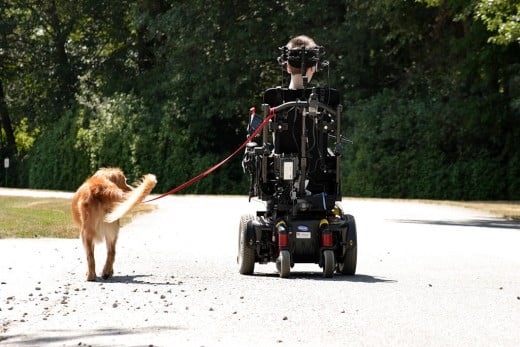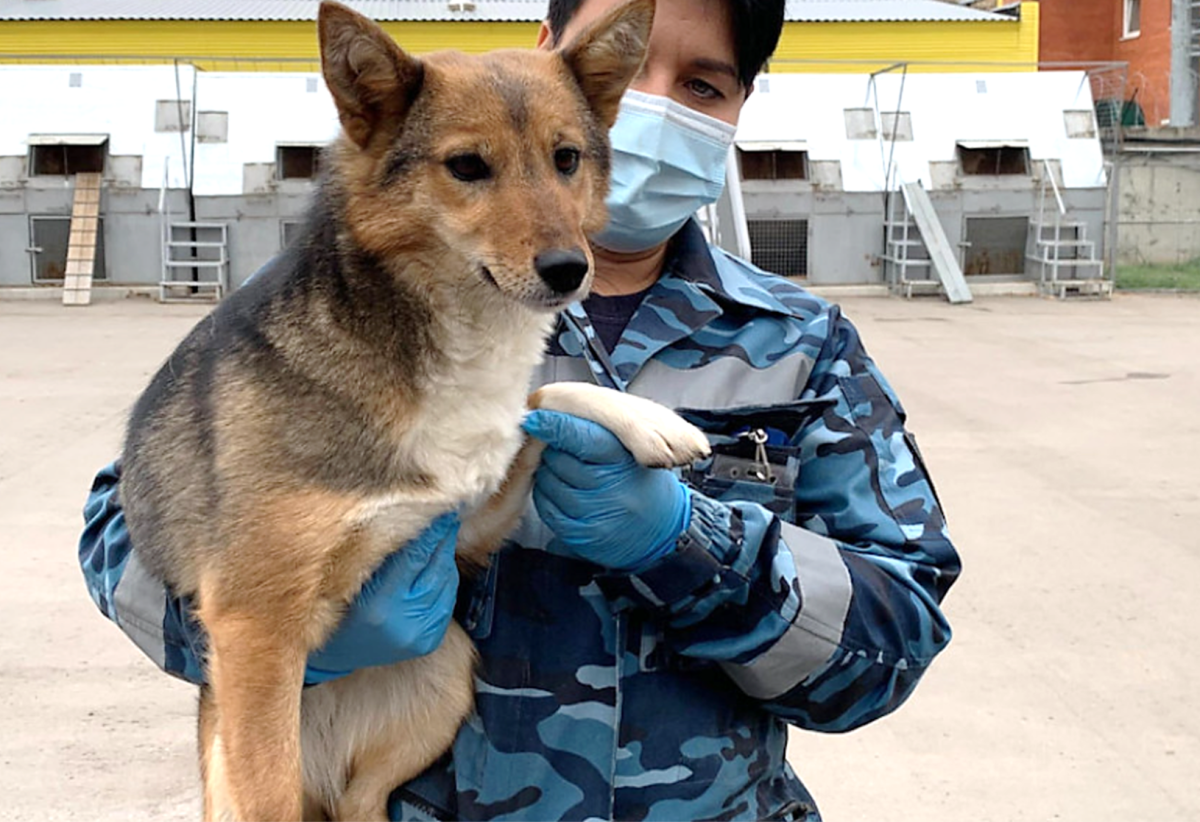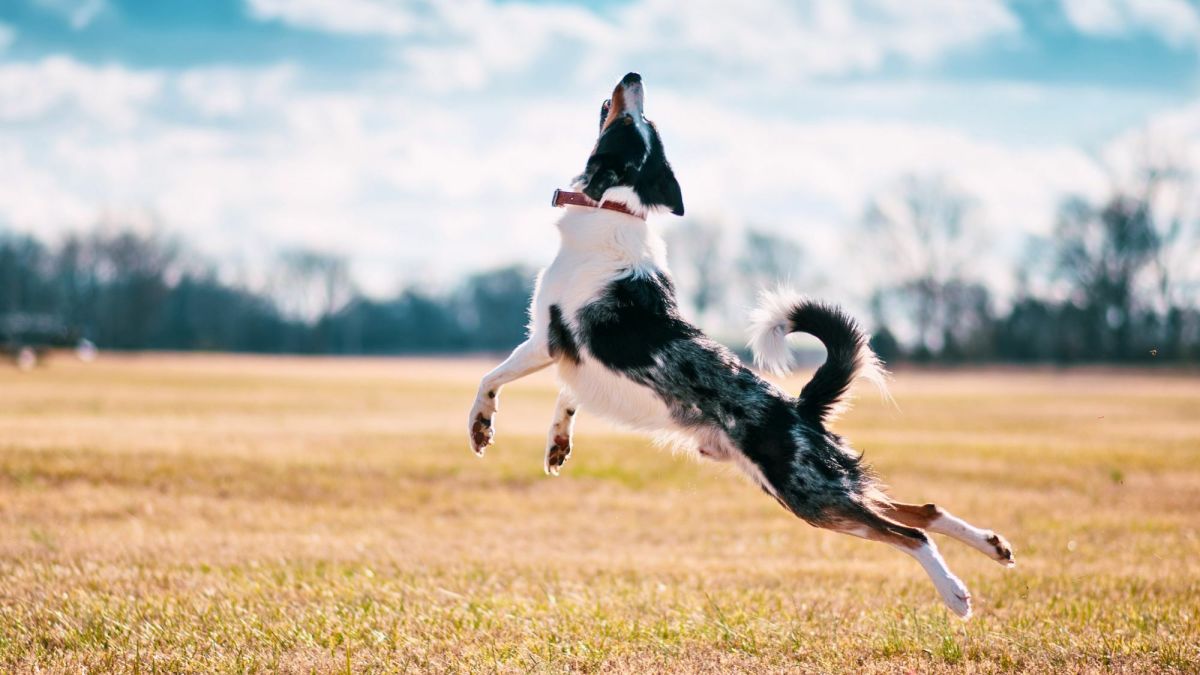New Ways That Dogs Can Detect Diseases and Predict Medical Emergencies
Some dog's noses can sniff out and detect diseases

The ways that dogs can help us is expanding even now
Given recent discoveries about our canine companions, you may soon find yourself addressing one or more of your medical practitioners as Dr. Dawg. Using their noses, ears and other senses that we aren't even sure about, dogs are now detecting diseases long before the latest and most sensitive lab tests can.
Dogs have helped us navigate through and survive in our world for thousands of years. Now they are also used as service dogs to help people with various physical, mental and emotional impairments. In the future their value will increase even more as they assist us by diagnosing some acute medical conditions and by predicting dangerous episodes in chronic diseases.
The variety of uses we've found for dogs keeps expanding, and their willingness to be put to those uses is limited only by their ability to do what we ask. Service dogs are trained almost from birth to assist blind people in living more confident and freely mobile lives. Paraplegic masters count on their dogs to pick things up, to carry packages and to manipulate light switches, door handles and water faucets. Dogs routinely carry books in backpacks and pull severely paraplegic students of all ages as they move from one classroom to another in electric wheelchairs. They also alert people who are deaf to important noises, such as a crying baby, a ringing phone, the doorbell or a fire alarm.
Dogs are soothing and calming, and have become almost standard companions for people who have anxiety disorders. These canine companions are invaluable in helping our veterans and other people who suffer from Post Traumatic Stress Disorder. Therapy dogs are routinely taken to hospitals, schools, mental institutions, nursing homes, prisons and Alzheimer centers to provide moments of ease and joy to residents. Research by the American Heart Association proved that when a therapy dog visited heart failure patients for 12 minutes, their blood pressure went down and fewer stress hormones were produced. In Alzheimer's centers, several studies have shown that, among other benefits, dogs can reduce agitation, improve appetite and increase the level and frequency that patients interact with their surroundings.
But all of those duties have barely touched the medical potential of dogs to help humans. If they had no further talents, their devotion, selflessness and willingness to help us would be priceless. However, they have some very useful abilities that are just now being tested for medical purposes.
Dogs have a sense of smell that is, depending on the breed, from 10,000 to several million times more sensitive than a human's. While our brain has a large visual cortex, which allows us to see very well, the dog's brain has a large olfactory cortex, which allows it to smell very well. Dogs can be trained to track human scent that is several days old, and can detect drugs and explosives that are encased in sealed containers. Their powerful and intricate olfactory capabilities allow the best of them to detect odors that are so faint they constitute only a few parts per billion in a mixture of other mixed odors.

Researchers at first had a very difficult time accepting how accurate the dogs were in detecting cancer.
In the past few decades, people have noticed that a dog with a good sense of smell can detect skin cancer. Based on patients noticing this, research was done and confirmed it. Then studies investigated other potential cancers that might be detected. Dogs have been proven to also detect the smell of breast, lung, bladder, kidney and prostate cancer.
Investigating the medical potential for great dog noses began in England in the late 1980s. In two different cases, a dog began to show great attention to a spot on a master's leg. One dog began to repeatedly nudge his master's trouser leg where a patch of eczema was located on the outside of his master's thigh. The eczema had been there for 18 years. A biopsy, prompted by the dog's showing constant concern for that patch, proved that the patch of eczema had turned cancerous. Another dog began to pay attention to a mole on the back of her master's calf. The master had other moles, but the dog only paid attention to that one mole. The dog even attempted to nip it off one day. The woman took her dog's concern to heart and had the mole removed and biopsied. It was found to contain an aggressive form of melanoma. However, thanks to the dog, the melanoma was found early and her master's life was saved. These two cases caused a pair of dermatologists in England to begin research on ability of dogs to sniff out skin cancer.
Research on disease sniffing dogs has now spread to the U.S., as well as several other developed countries around the world, and the results have been so consistently good in many cases that researchers have had difficulty accepting them. In 2006, research in Northern California at the Pine Street Foundation found that dogs can detect more breast cancer than mammography - 88% - without false positive results. (This is especially valuable for women with dense breast tissue, as mammography is less effective for these women, resulting in more false positive results.) In lung cancer, dogs were found to have anywhere from a 70% to a 97% detection rate. (Even the lowest detection rate by dogs for lung cancer is still higher than that of the latest diagnostic machines and laboratory procedures.) The dog detects both lung and breast cancer by sniffing the patient's breath, and smelling the incredibly minuscule amount of Volatile Organic Compounds given off by the cancer tumor.
Cancer sniffing dogs are trained to isolate and smell exceedingly tiny amounts of alkanes and benzene derivatives specific to different types of tumors. Not only are these compounds not found in healthy tissue, but each cancer is recognizable by its different odor. Dogs can detect them on the skin surface, in the breath and in urine. Not all dogs can do this, as it does require dogs with the best sense of smell. However, for these dogs, medical labs have found that there are no manmade diagnostic tests that can match the dogs' detections for sensitivity. Given the success of the cancer research with sniffing dogs, research is planned to see if dogs can detect early cases of other diseases, such as tuberculosis.
Dogs in Germany being trained to detect lung cancer
Dogs can now detect early ovarian cancer, which has no other reliable diagnostic tests.
The ability of dogs to locate cancers and other diseases via the Volatile Organic Compounds(VOC) which the different kinds of tumor tissue emit has opened a new type of diagnostic research. Attempts are being made to create machines that can also detect disease VOC's.The first VOC studies completed located VOC markers for lung cancer and breast cancer. However, there are problems with creating machines to do this type of diagnosis. The first problem is that the machines so far cannot match the dogs for sensitivity - the dogs have better detection rates than the machines. The second problem is that, while the dogs may doubt what they smell a small percentage of the time and pass an early cancer by, they never indicate cancer where there is none - in other words, give a false positive result - as a machine might be programmed to do. This is because the dog is smelling and deciphering the whole set of smells, while the machine is detecting smells that may be like the tumor smell, but not the tumor smell, and not really deciphering anything.
As of May, 2012, the University of Arkansas for Medical Sciences has trained four dogs to recognize and detect the VOC's given off by ovarian cancer. This is extremely important, as no other method of early detection exists for ovarian cancer. The only way ovarian cancer is currently being detected is via patient symptoms. However, the symptoms often mimic other problems like indigestion or menstrual cycle problems. By the time the symptoms become severe enough to cause a woman to visit her doctor, the ovarian cancer is in the advanced stages. It is often too late to save the patient. Sniffing dogs may very well become the standard early detection test for ovarian cancer. Not only would this save many women's lives, but it would be a routine diagnostic test based simply on the patient exhaling.
This same skill, the ability to sniff out minuscule changes in a human's odor, has also saved people's lives because their dogs have detected various enzymes being released in the bloodstream that indicated a heart attack was about to occur. The dogs had recognized that the changed scent of the human was unhealthy and indicated an impending emergency.
Doctors aren't sure if a dog is detecting the heart attack from scent alone, or is also able to detect a change in the person's electromagnetic field, and possibly to hear minor changes in the heartbeat and blood pressure.
Whatever senses the dog is using for detection, the dog knows the heart attack is coming and it intervenes. A man used to take his dogs for a long walk in the hills every day in California. He had an older dog and a younger juvenile dog. The younger dog kept trying to turn them around and go back home. The man finally gave up and went home. He then had a heart attack at home, where his wife was able to call for help. Due to the dog's insistence, the heart attack did not happen when the man was alone with the dogs in the hills, where he would surely have died. He said his dog had never acted like that before. (He also said that if the dog acted like that again, they would head right home and he would go to the emergency room.) There are many other claims like this one about dogs saving masters who were having heart attacks.
The various ways that dogs can detect upcoming medical emergencies are still not understood
Another subtle change in body odor comes when a type 1 diabetic has too little sugar in his or her blood, and a diabetic episode is about to occur. Dogs can be trained to detect this, which helps many type 1 diabetics, especially children, to have a more normal life. Dogs4diabetics in California began in 2000 when dog training was started for sniffing hypoglycemia - low blood sugar. This program has served many people since that time, and an equivalent program is now also active in England.
Dogs also have extraordinary hearing. The normal human hearing range is approximately 20 Hz (cycles per second) to 20 kHz (20,000 Hz), while a dog's is approximately 40 Hz to 60kHz. This makes a dog capable of hearing signals that are far outside of our hearing range. This includes minor changes in heartbeat variability (how hard a beat is or how far apart two beats are), changes in blood pressure, breathing and certain joint movements.
Some dogs also have a sensitivity to changes in their masters that we can't explain. These dogs can tell when a person is about to have an epileptic seizure. This sense happens before any brain wave changes are detectable. What is the dog sensing? We can guess that the dog may see some subtle changes in movement, or hear changes in breathing and heart rate variability. Some people have even suggested that the dog can detect changes in the person's aura or energy field. But, whatever changes the dog can detect, these changes are too small to be detected by even specialized equipment designed for research into this phenomenon.
When potential service dogs for this purpose are tested, about one in ten is found that can detect imminent seizures. (If the dog can't detect the coming seizure, no training can teach it to detect the seizure; that natural ability is either present or not present.) Such a dog can then be trained to provide the specific type of assistance that the epileptic master needs. One person will need to be notified so medication can be taken that will stop the seizure before it happens. Another person will need to be notified to give time for finding a quiet, safe place to have the seizure, because it can't be stopped.
Still another will have an "absence" seizure, which means that the person will move around, but be unaware of surroundings. In that case, the dog will walk with the person and block him or her from running into things and tripping over things until the seizure is finished. Some dogs are also trained to press an assistance alarm that will give a call center GPS coordinates of a person who's having a seizure. All seizure service dogs carry information that would be needed by medical personnel.
The research that has been completed on training sniffing dogs has only brushed against the capability of dogs to help us by reducing stress and anxiety levels, diagnosing diseases and detecting impending medical episodes. When we consider that about any new disease will change our body chemistry, and that a good scent dog can be trained to detect very slight scent changes in a human, the diagnostic potential of sniffing dogs to cause major changes in diagnostic procedures and major improvements in diagnostic accuracy are very high. Add to that the abilities of dogs to detect our medical emergencies in ways that we can't yet understand, and the future may find that Dr. Dawg has become a normal and welcome staff member in clinics everywhere.









